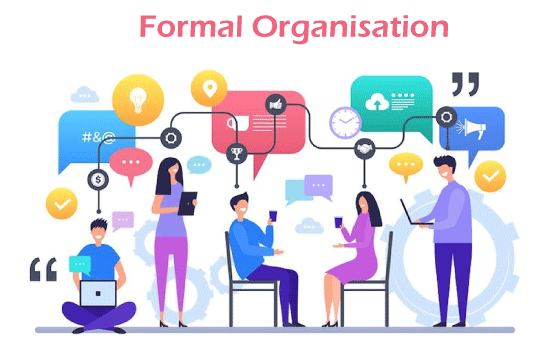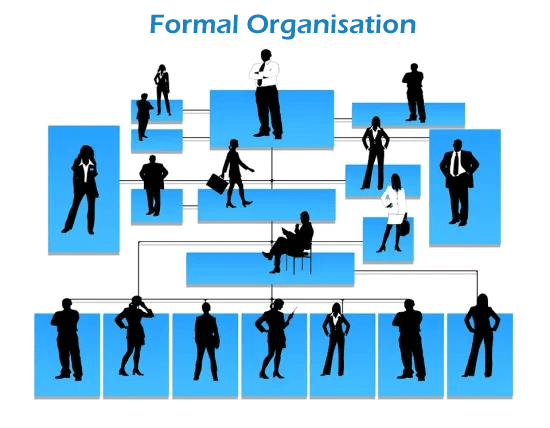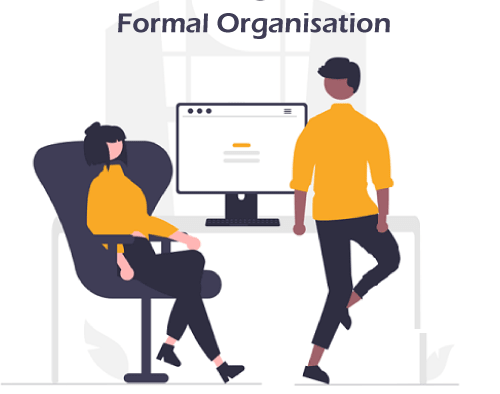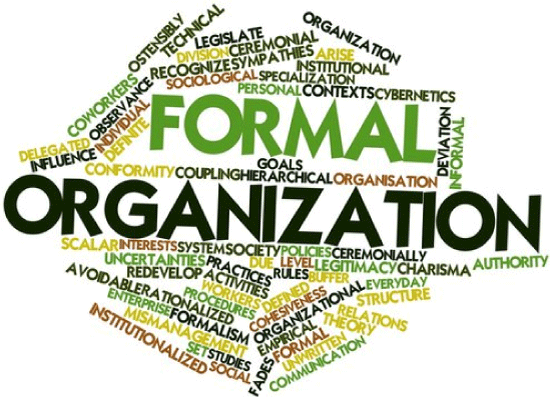Advantages and Disadvantages of Formal Organisation
Formal organizations are developed to attain goals with the employee's collective effort. They are heavily dependent upon the hierarchy of power and authority and division of labor which coordinates to work in an efficient and unified manner. In the formal organization, each job clearly defines the rules, duties, responsibilities, and authorities to whom they have to report.

People in a tiny business circle often work because they have some interpersonal relations. They could be a neighbor or friends of the owner, but in large organizations, organization work based on shared professionalism, and there is less scope for making interpersonal relations with the staff. These big corporations are an example of formal organizations.
Basic Characteristics of Features of the Formal Organisation
- Defined a system for replacing members within the organization
- Communication travels through the proper chain of command
- Unified actions are taken to attain the goals
- Shared and documented goals, policies, and practices
- Hierarchy of power and authority and the division of labor
Different Forms of Formal Organization
All forms of formal organization show these characteristics, but not all forms are the same. Organizational sociologists have identified three types of formal organization: Normative, practical, and coercive.

- Normative Organisation: Those organizations whose control and order are kept through a shared set of commitments and morals. Members join it voluntarily; some membership is attained through a sense of duty. Examples of normative organizations include social groups like fraternities and sororities, political organizations, and churche The cause unifies members of these organizations. the cause is significant and binds them together.
- Utilitarian Organization: Utilitarian organizations are those organizations where people join to fulfill their needs. Some examples of useful organizations include schools and colleges. These organizations are administered with mutual cooperation and exchange. Regarding employment, the laborer earns their salary by offering their time and labor to the organization. With regard to school, a student develops skills and knowledge and gains a degree in exchange for respecting the rules and authority of the school and paying tuition fees. Utilitarian organizations stress more on shared purpose.
- Coercive Organisation: These are those organizations whose members are forced and administered within the organization attained through the force. Prison is the most suitable example of a coercive organization, but there are other organizations that fit this definition. They are military units, boarding schools, and psychiatric facilities. The senior authority compels membership in the coercive organization, and a member must carry a permit from the authority to leave. This organization exhibits steep power of hierarchy and expects stricter obedience to the rule and authority. Members of the coercive organization play highly routine life and wear uniforms to exhibit their responsibilities, roles, and rights.
Advantages of the Formal Organisation

- Easy to Make Accountable: One of the foremost advantages of a formal organization is that it is too easy to fix accountability as employees know their roles, duties, and responsibilities. They are duty-bound to complete their task in the given time frame. Members of the organization will face the consequences of dereliction of duty and irresponsibility during work.
- Clarity: Member of the formal structure has clear-cut knowledge of its role and duties. It helps an employee to perform his task efficiently and effectively. There is little scope for confusion in such an organization.
- Stability and Effectiveness: A formal organization offers more stability and effectiveness in achieving organizational goals. It fosters cooperation, coordination, and consensus among the employees. The organization works like a machine to achieve its full fill organizational needs. It also provides a better platform for the organization's members to enhance their capabilities and fulfill their individual goals. The organization becomes more robust, disciplined, and effective.
- Unity in Command: Directions given by the top management directly percolate the lower level of the organization. It helps avoid confusion and does not create any confusion and resistance among the member of the organization.
- No Overlapping of Work: Work moves in an orderly fashion in the formal organization. The commands are clear from the top organization, and there is not much scope for delay, duplication, and overlapping in work.
- Professional Relationship: Professionalism is the hallmark of the Formal Organisation. Members in the organization tend to maintain professional relationships among themselves and have less scope for emotions and other factors. They focus more on maintaining utmost professionalism in their work rather than maintaining interpersonal relationships, for example, kinship.
- Coordinated and Systematic: Coordination among the employees and different departments of the organization is remarkable and commendable. This organization is known for its coordination and systematic workflow that take place in their organization. They are more systematic and show full passion for their work. Each department of the organization is fully aware of its roles, responsibilities, and duties.
Disadvantages of Formal Organisation

- Delay in Action: The Decision-making process in the Formal Organisation is not too fast. It takes time to consider all the factors in their mind, and then they conclude. This scenario is visible in almost all organizations.
- Avoid social Needs: This organization has little affection toward a social concern and tends to ignore the psychological and social needs of the employee. It behaves like a well-oiled machine that cares about achieving organizational goals. Ignoring psychological and social needs lead to discontent and lack of motivation in the employees, and the organization will not be able to use the employee's full potential.
- Mechanistic Approach: It has well-defined rules for the organization's departments and employees, which hinders the process of mutual interplay. The organization is not able to exploit the potential of the employee.
- Lack of Initiative : Innovation and Open ideas cannot be generated in a tightly-gripped organization. There is less chance of good initiative, and independent thinking is almost zero in such organizations. This would make an organization ineffective, and the growth of such an organization will be hindered.
- Higher Funds: Budget demand is more in the formal organization than the informal one. Formal organizations require lots of funds to run their organization. They have to the full fill all rules and conditions to run their operations. They have to support their employees to remain dedicated to the organization financially.
- Rigid Organisation: These organizations are rigid in their approach. These organizations resist change and do not want to incorporate new traditions into their organizational atmosphere. They try to insulate their organization from outside changes and tend to keep them away from the mainstream. Those who are in lower positions are not allowed to make to its decision on their own. They have to wait for approval from their senior. People must be disciplined in their approach.
Formal vs. Informal Organisation
| Basis |
Formal Organisation |
Informal organization |
| Meaning |
It is deliberately formed and shaped by the management to fulfill certain goals. |
It is organic and spontaneous as a result of interaction among the members |
| Formation |
Planned and Formed by the Management |
Result of social interaction |
| Flow of communication |
It obeys the scalar chain of command |
No predecided route |
| Flow of Authority |
It flows from the Top position to the bottom position |
It can take vertical as well as Horizontal |
| Purpose |
To attain the organizational goal |
To satisfy the social and cultural needs and attain the common interest |
| Behavior of members |
Behavior protocol is clearly defined for the members |
No predecided behavior pattern for the members |
| Structure |
Clear and well-defined structure, i.e., pyramid shape |
Complex chain of social relationships among the individual of the organization |
| Leadership Position |
Due to the virtue of their superior position, the managers are the leaders |
The manager may or may not be the leader |
| Stability |
Predictable and stable |
Neither stable nor predictable |
| Nature |
Rigidity |
Flexible |
| Organizational Chart |
It can be represented on the organizational chart |
It cannot be exhibited on the organizational chart. |
|




 For Videos Join Our Youtube Channel: Join Now
For Videos Join Our Youtube Channel: Join Now









